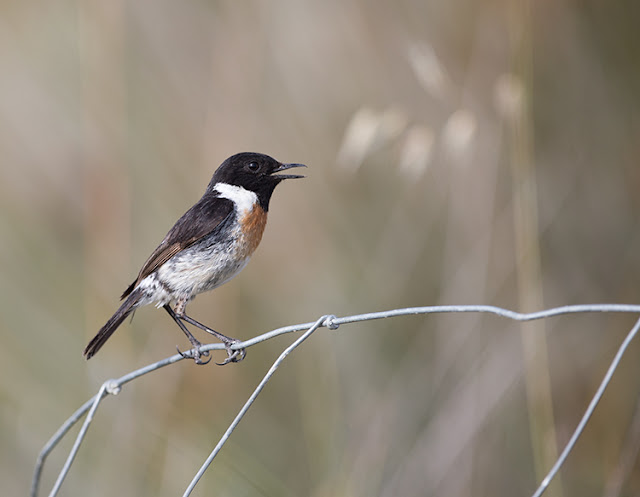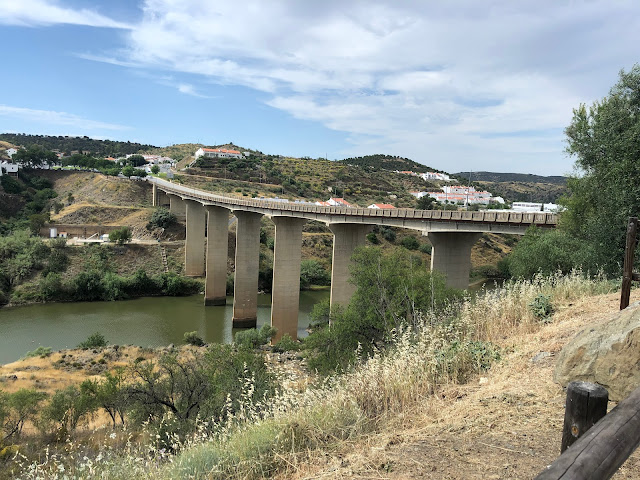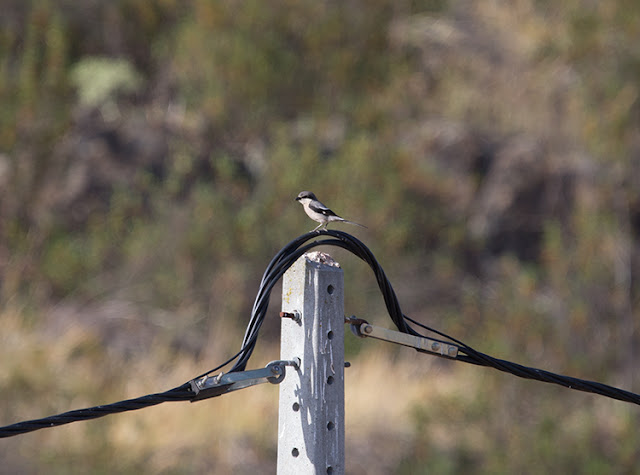Once more we were out the door by 6:30am. First stop was a return to the previous day's location where we had Montagu's Harrier. That morning there were five birds but they'd moved several fields away so views weren't as good. However, the morning air was filled with the sound of singing Calandra Larks.
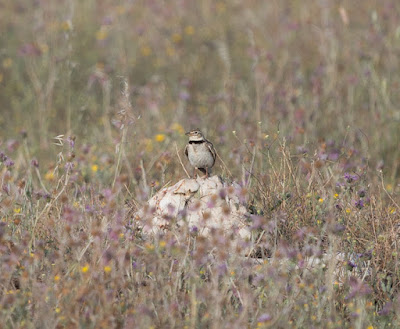 |
| Calandra Lark |
Plus we were treated to this flight displaying Little Bustard.
 |
| Little Bustard |
Its easy to forget and take for granted how many great species we were seeing on a very regular basis. Woodchat Shrikes, Zitting Cisticolas, Sardinian and Cetti's Warblers were common and practically every piece of water had at least one Black-winged Stilt on it. Corn Buntings and Crested Larks were abundant (Thekla are present too and apparently both apperance and song overlap so even experienced local birders struggle to seperate them, however we both agreed that most of what we saw were probably Crested and not Thekla Larks, but what do we know!). White Storks were well established and many nests had little Storks present. Plus, and I didn't know this before, Spanish Sparrows create colonies within White Stork nests.
 |
| Corn Bunting |
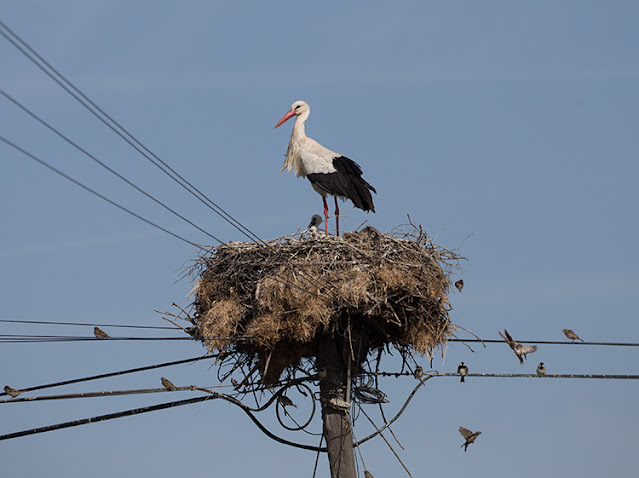 |
| White Stork |
 |
| Spanish Sparrow at White Stork nestCrested Lark |
We made a second stop at the raptor watch-point Senhora do Aracelis where we had better views of the male Western Black-eared Wheatear from the previous day.
 |
| Western Black-eared Wheatear |
And a Golden Oriole sang from the surrounding Eucalyptus trees.
With the daytime temperature in the high thirties, we returned to the cottage where I hit the wall and slept for several hours. Whilst I slept, Nick did the dirty dishes (thanks) and soon enough we were back out birding again although it was still hot. We stopped along a track off the N123 to Monte da Apariça. where the land owner has installed nest boxes on the power line pylons for Rollers.
 |
| European Roller |
 |
| European Roller |
Plus there were two Hoopoes, one of whom obliged for a brief photo.
Hoopoe
A spot outside Mertola for Iberian Green Woodpecker was unsuccessful insofar as we didn't see or hear that species there but Nick did find a Western Orphean Warbler (which was new for the site going by eBird). Plus, a purring Turtle Dove on the wires was nice.
 |
| Turtle Dove, Mertola |
We made a quick stop in Mertola so I could run to the pharmacy to get cream for my insanely itchy mosquito bites. I shopped while Nick apologised to the local Polizei for my bad driving and even worse parking - sorry Nick!
Our final stop of the day was an abandoned Copper mine - the Sao Domingo mine where we would have the best chance of seeing White-rumped Swift. This was a bizzare and surreal location. I could try to describe it but I think the photos do a better job. Despite the environmental impact mining has clearly had, nature was starting to re-establish itself and we had great birds there. Two White-rumped Swifts, 2-3 Black-eared Wheatear, Blue Rock Thrush, Crag and House Martins, European Bee-eaters, Red-rumped Swallows and Common Swifts.
Sao Domingo Mine
 |
| White-rumped Swift |
If it wasn't getting so late I'd have happily stayed here an hour longer, but we were hungry and wanted to stop off at a restaurant that had been recommended to us earlier in the trip. They couldn't understand us and we couldn't read the Portugese menu but they took one look at us and figured 'Steak and chips' for these lads. And that's what we got, along with local cheese, sausage and bread. Perfect!
We managed to share one beer between us before crashing into our beds shortly before midnight!


















